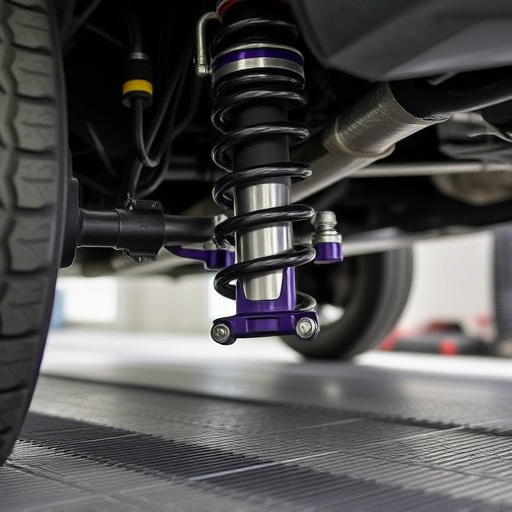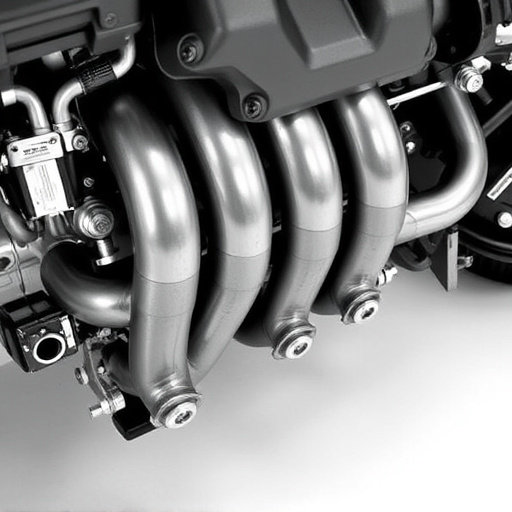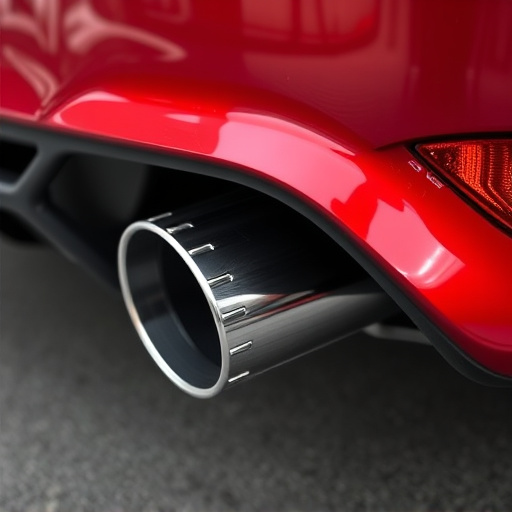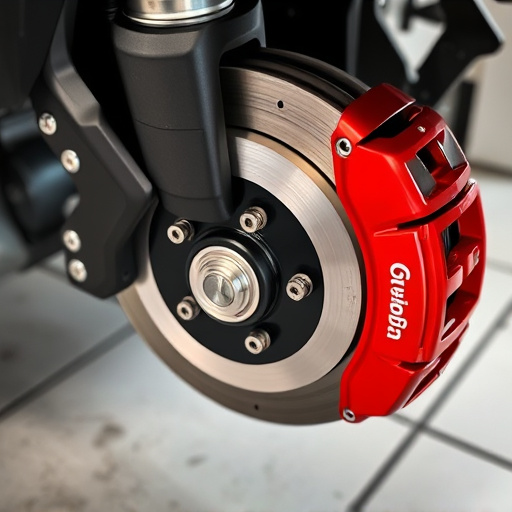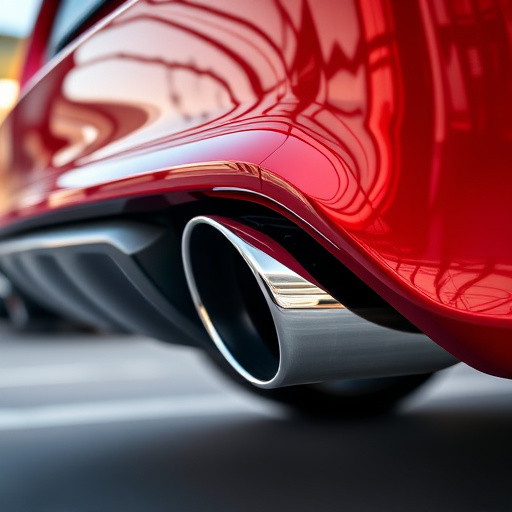Single exhaust systems, characterized by their simple design, direct all engine exhaust through one pipe, offering benefits like reduced vehicle weight, lower backpressure for efficient gas flow, and faster brake cooling. Popular among everyday drivers and cost-effective, modern designs often include catalytic converters to meet emissions standards. In contrast to dual exhaust systems, single exhaust systems split the exhaust stream into two pipes with separate mufflers and tips, primarily used in high-performance vehicles for enhanced performance and more aggressive sound. They also promote balanced weight distribution, better ground clearance, simpler maintenance, and lower routine upkeep costs.
“Uncover the battle of the exhaust systems! This article delves into the heart of performance, cost, and style with a comparison between Single Exhaust and Dual Exhaust setups. We demystify these powerhouses, breaking down their functionality, advantages, and drawbacks.
From the simplicity of Single Exhaust Systems, known for their cost-effectiveness, to the enhanced sound and performance of Dual Exhausts, we explore common applications and key considerations. Whether you’re a performance enthusiast or a budget-conscious driver, this guide helps you make an informed decision about your vehicle’s exhaust system.”
- Understanding Single Exhaust Systems:
- – Definition and basic functionality
- – Advantages in simplicity and cost-effectiveness
Understanding Single Exhaust Systems:
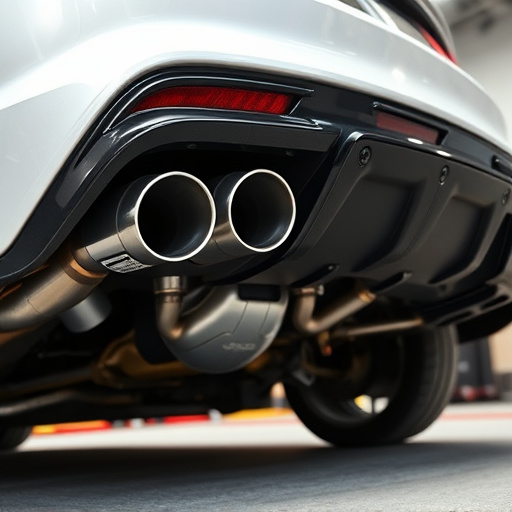
Single exhaust systems are a straightforward design where all the exhaust gases from the engine pass through one pipe before being expelled. This setup is common in many vehicles and is known for its simplicity and ease of maintenance. The single exhaust runs from the engine, often branching off into multiple smaller pipes to accommodate different cylinder banks, and then combines these branches into a larger tailpipe. This design offers several advantages. First, it keeps the overall vehicle weight down due to its simpler construction, which can positively impact vehicle performance and handling. Additionally, single exhaust systems are less prone to backpressure, ensuring efficient gas flow from the engine, thereby enhancing performance brakes and improving throttle response.
While they may not be as popular in high-performance vehicles, single exhaust systems have their place, especially for everyday drivers who prioritize reliability and cost-effectiveness. The absence of a catalytic converter in some single exhaust setups might raise concerns about emissions, but modern designs often incorporate this component to meet environmental standards. Moreover, the direct path of exhaust gases through a single pipe can contribute to faster cooling of brake rotors, which is beneficial for overall vehicle dynamics and safety.
– Definition and basic functionality
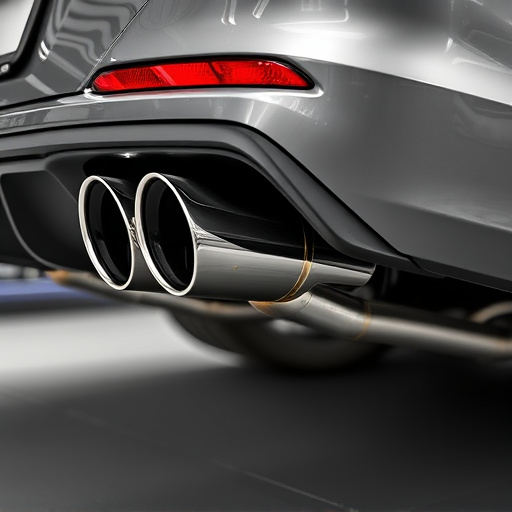
A single exhaust system is a straightforward setup where all the exhaust gases from the engine are channeled through one pipe, exiting from a single point at the rear of the vehicle. This simple design offers a cost-effective solution for everyday driving. The primary function is to facilitate the flow of spent gases away from the engine, ensuring smooth operation and minimal backpressure.
In contrast, dual exhaust systems divide the exhaust stream into two pipes, often with separate mufflers and tips. This configuration enhances vehicle performance by allowing for better gas flow and reduced restrictions, especially in high-performance vehicles equipped with powerful engines and modified intake components. The dual setup can also contribute to a more distinct and aggressive sound, appealing to enthusiasts looking for an enhanced driving experience.
– Advantages in simplicity and cost-effectiveness
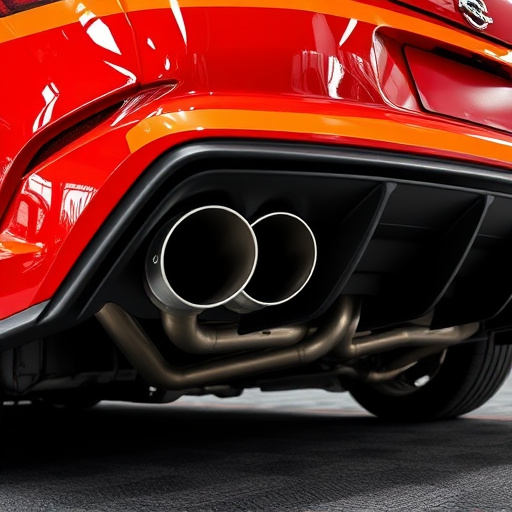
A single exhaust system is a straightforward and cost-effective solution for vehicle customization. Its simplicity means fewer parts are required, leading to reduced maintenance needs and potential failure points. This makes it an attractive option for car owners looking for an affordable modification that doesn’t compromise reliability. The single exhaust design also streamlines the under-car layout, often allowing for better ground clearance and easier access to critical components like brakes and suspension—a consideration when enhancing performance brakes, for instance.
In contrast to dual exhaust systems, which can add complexity with multiple exits and intricate routing, a single exhaust system’s direct flow contributes to a more balanced weight distribution. This can be advantageous in handling and cornering dynamics, especially when considering the role of intake components. Furthermore, the cost savings extend beyond initial installation, as routine maintenance is typically less expensive due to the reduced number of parts exposed to high temperatures and pressure, which are common in performance-oriented vehicles with dual exhaust setups and their associated exhaust tips.
When considering the single exhaust vs. dual exhaust debate, understanding the basics of each system is key. The single exhaust system stands out for its simplicity and cost-effectiveness, making it a popular choice among many vehicle owners. Its straightforward design means fewer potential points of failure, which can translate to less maintenance over time. While dual exhaust systems offer enhanced performance and a deeper sound, they come at a higher upfront cost and complexity, which may not be necessary for all drivers. Ultimately, the best system depends on individual needs and preferences, with single exhaust proving to be a reliable and affordable option for many.








